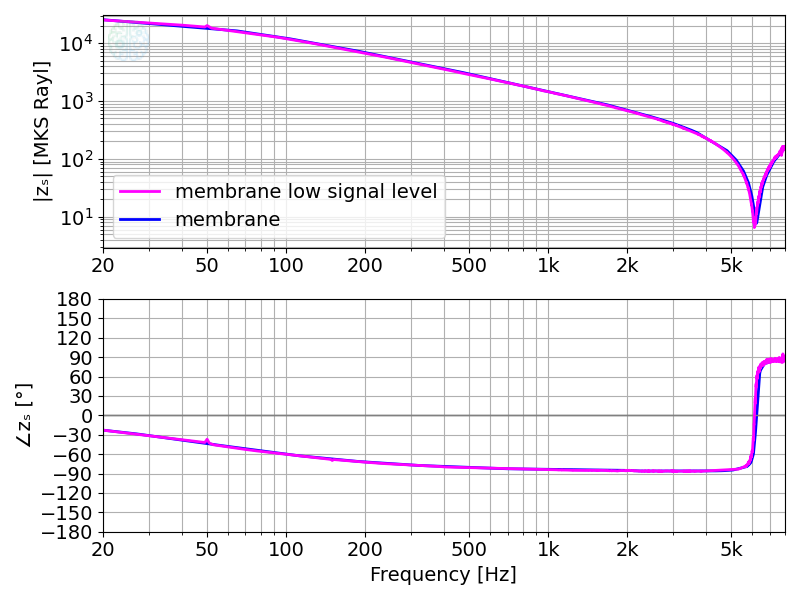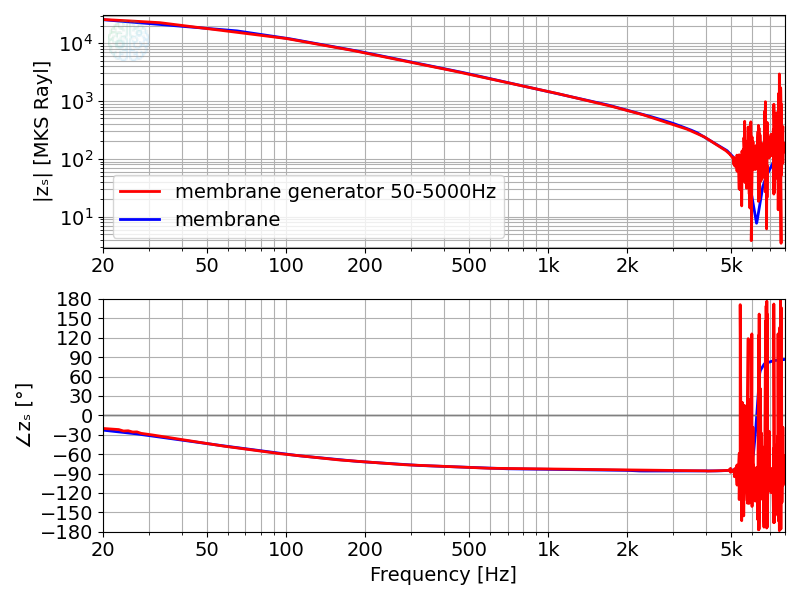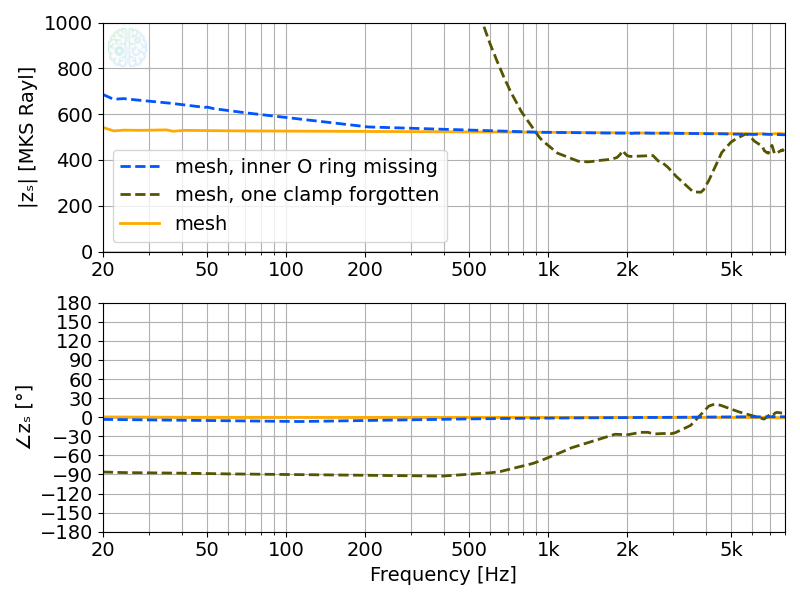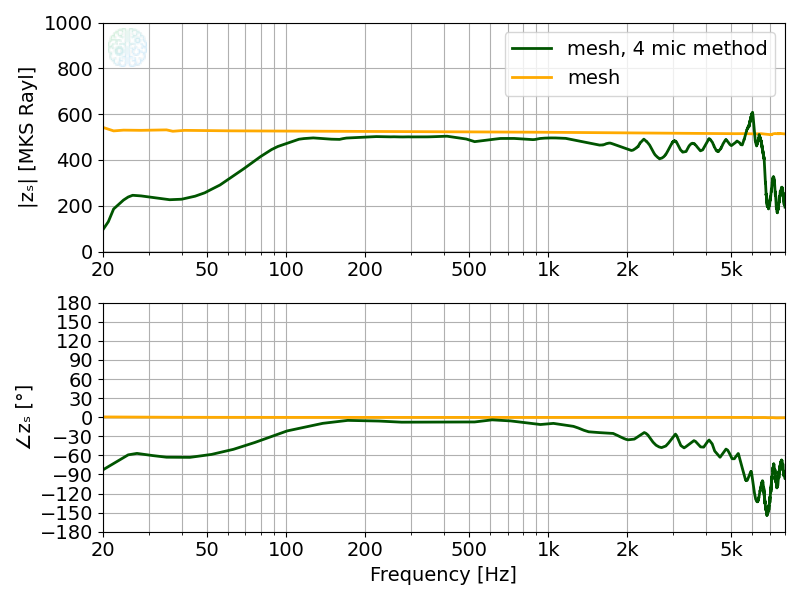Common errors
Sometimes things do not work out as intended. We show several examples of what could go wrong. Each time the failed measurement is shown together with the correct measurement.
Signal level too low
If the signal level is too low, the result gets noisy and 50 or 60 Hz hum can enter. This example shows both. The noise is visible as a fuzzy line 6...8 kHz and the hum is visible as a blip at 50 Hz.
Noise at low frequencies does not manifest itself as a fuzzy line, because the data is plotted on a logarithmic frequency scale, while the data has a fixed frequency spacing. Visually, the data points are spaced further apart. Noise then shows as a wobble or simply as a wrong result.

Incorrect bandwidth of signal generator
In this example, the signal generator only covered 50...5000 Hz. Outside of this range, the result is very noisy.

Leak
A leak manifests itself in the following ways:
- Incorrect low frequency result: it can be either too high or too low, depending on the location of the leak and whether the leak was present on the sample measurement or on the reference measurement (if applicable).
- Obviously incorrect result: if the leak is really large.
Possible causes of a leak are:
- Clamps not applied
- O ring missing
- Sample holder disc not flat & smooth or incorrect thickness

Attempting to measure a high series impedance with the 4 microphone method
The 4 microphone is not suitable for measuring samples with a high series impedance. If it is attempted, the result can be anywhere from noisy to completely wrong.
